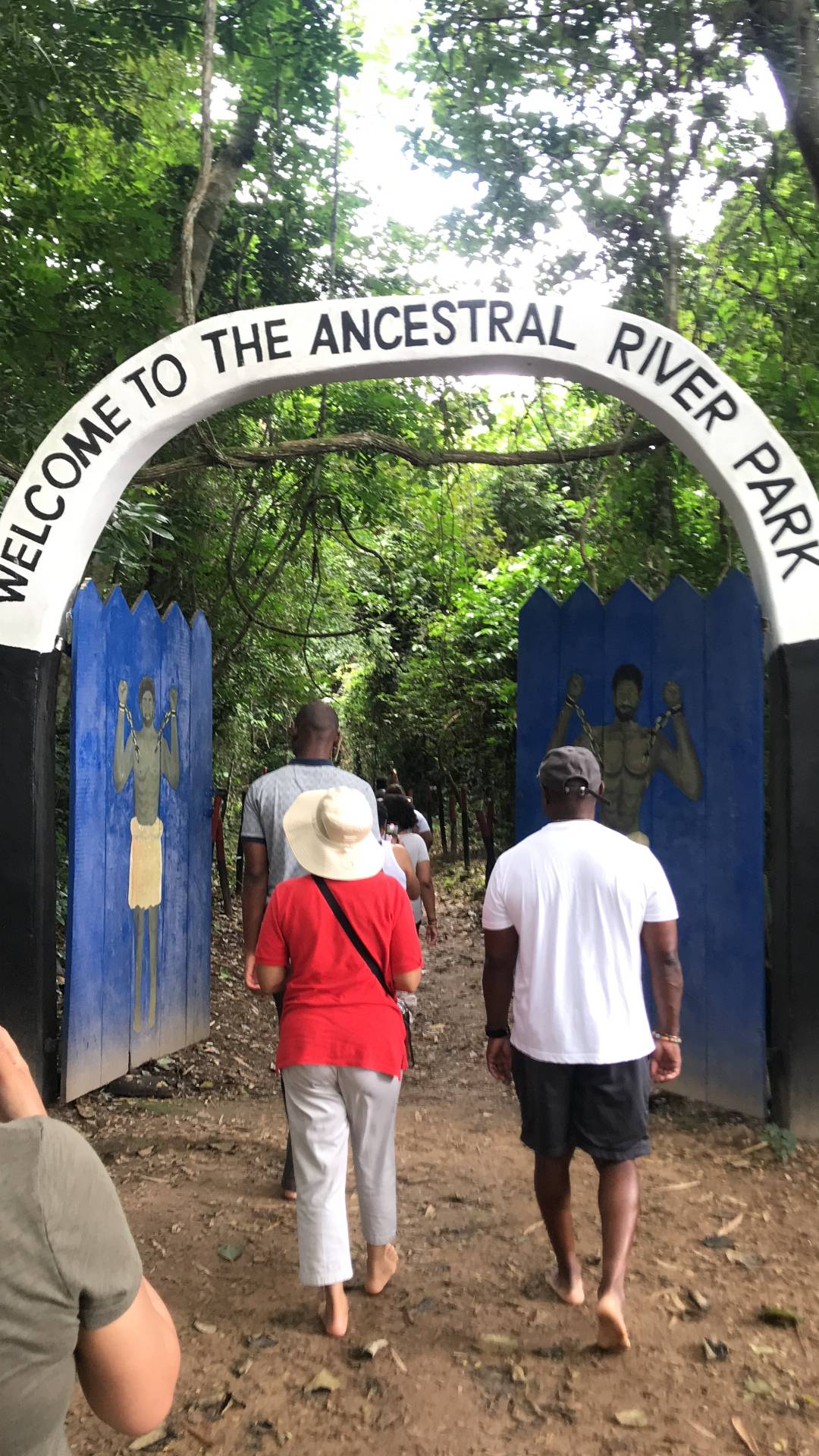Where the Water Remembers
Water, in Ghana, is never just water. It is spirit, song, and memory. It whispers stories of creation and cleansing, of ancestors and forgiveness. Across the country, sacred rivers and springs have long been places of prayer where people come not only to heal the body, but to find peace in the soul.
For the African diaspora, returning to these waters is a homecoming within a homecoming. It’s a reminder that long before faith was written in books, it flowed in rivers. The act of bathing, fetching, or blessing with water has always been a sacred conversation with life itself.
From the quiet pools of Tano Sacred River in Techiman, to the mystical Wli Waterfalls in the Volta Region, Ghana’s waters breathe with reverence. The faithful, the curious, the weary are all drawn by something invisible yet undeniable.
The water touches those who come seeking its power. It reaches beyond the surface to connect with something deeper within each visitor.
The River That Knows Your Name
In Techiman, central Ghana, the Tano Sacred River winds through forest and farmland, its surface shimmering like bronze beneath the sun. Locals believe the river is the dwelling of Taakora, an ancient deity who protects truth and punishes deceit.
Pilgrims travel here seeking justice, fertility, or healing. They come barefoot, carrying white cloths, eggs, and bottles of schnapps as offerings. A priest or priestess guides them through ritual purification with prayers murmured in Akan, incense rising like smoke from memory.
Many visitors report experiencing profound healing at these waters. People who suffered from chronic illnesses describe feeling lightness not only in their bodies, but in their hearts after bathing in the sacred river. Medical treatments that failed to provide relief often give way to the restorative power of these ancient waters.
Such testimonies are common in Ghana’s spiritual geography. Even as modernity reshapes the nation, faith in the rivers endures. To many, these waters are living beings, protectors who cleanse not just the skin but the story.
Wli: Where the Water Falls Like Prayer
Far to the east, near the Togo border, the Wli Waterfalls crash from the highlands of the Agumatsa Range, their mist rising like a hymn. It is the tallest waterfall in Ghana, a place where nature performs its own ceremony.
The name Agumatsa means “Allow Me to Flow,” and that is what this place teaches: surrender. Travelers hike through lush forest alive with butterflies and the hum of hidden streams. At the base of the falls, pilgrims stand in silence as sheets of white-water thunder down in an eternal cleansing.
Visitors often describe hearing their ancestors in the sound of the cascading water. The land seems to breathe on behalf of those who stand beneath its power. The waterfall’s spiritual energy draws people seeking clarity, fertility, and courage.
For many in the diaspora, standing before Wli feels like baptism, not in religion, but in remembrance.
Nearby, the small villages of Wli Afegame and Agumatsa host visiting pilgrims. The people are warm, offering fruits, coconut water, and stories about how the falls never dry, even in the harshest harmattan. The waters continue flowing year-round because the ancestors never stop their eternal journey.
Boti Falls and Beyond: The Waters of Renewal
In the Eastern Region, the twin cascades of Boti Falls mirror each other like a pair of ancient spirits, one male, one female. Locals say when they unite, rain follows. The site becomes a gathering of celebration and reverence with schoolchildren on excursions, elders pouring libation, and lovers praying for harmony.
The nearby Umbrella Rock and Aburi waterfalls add to the region’s charm, reminding visitors that nature and divinity often meet in the same breath.
But it is not only in the famous spots that Ghana’s healing waters flow. In small villages like Amedzofe, Kintampo, and Nzulezu, sacred springs and ponds continue to serve as sanctuaries for both locals and travelers.
Returnees from the diaspora often describe their encounters with these waters not as finding healing, but as receiving it. The water gives what the seeker needs, freely and without condition.
The Spirit Beneath the Surface
To travel through Ghana’s sacred waters is to understand that healing here is not a transaction. It’s a relationship. The rivers and falls are not tourist sites; they are teachers. They remind us that peace is often found in stillness, and that stillness is something you enter, not create.
Every libation poured, every hand dipped, every prayer whispered to the rippling surface is an act of reconnection to earth, to ancestry, and to the self.
For the diaspora traveler who has spent years searching for meaning abroad, these waters offer more than beauty; they offer belonging.
Kneeling by the water means kneeling before your history. It is an acknowledgment of all that came before and all that continues to flow.
A Journey That Never Ends
In the end, the sacred waters of Ghana are not just places to visit. They are stories that flow, stories of healing, of return, and of home.
As you leave with droplets still clinging to your hands, you realize something profound. The journey doesn’t end when you dry off. It continues within you, flowing endlessly, like the rivers of Ghana themselves.
These waters carry the memory of generations, the prayers of pilgrims, and the promise of peace. They wait patiently for each traveler to arrive, ready to offer what only they can give: a chance to be washed clean, to be made whole, to be brought home.




